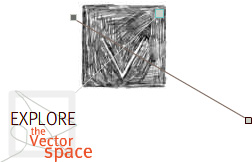Wegzeit
The Geometry of Relative Distance
Editor's Introduction
When you ask someone in Los Angeles how far it is from the beach to downtown, he or she will answer with the number of minutes it generally takes to traverse the distance rather than noting the number of miles. This system of defining and representing distance has recently been codified for use on the California Department of Transportation's large LED "Freeway Condition" signs, which offer up-to-the-minute projections of estimated drive times: "8 minutes to downtown;" "22 minutes to 605 freeway," and so on. Intrigued by the shift from the absolute units of distance traditionally used to describe space to the relative space of approximate drive times, Dietmar Offenhuber undertook an investigation of other examples in which data about the city is visualized in relative terms. The result of his work is Wegzeit, which uses six 3-D mapping paradigms ”" or cartograms ”" to visualize the city according to a range of conditions and interests.
In one cartogram, Offenhuber shows what he calls "zones of velocity," which illustrates differing sectors according to the speeds traveled therein. Another model shows how the experience of temporal distance is generally asymmetrical depending on a range of factors; he calls this "the rush hour slope." The maps offered by Offenhuber help demonstrate the potential malleability of cartography, as well as the significance of the manner in which data is made visual. While we all know the limits, ideological and otherwise, of maps, Offenhuber's attention to the relative over the absolute offers a productive refiguring of cartographic principles which can only be enacted in a dynamic, digital form. Wegzeit is interested in exploring ways of representing space in an abstract sense, merging the subjective parameters of individual navigation with the broader implications of an integrated network of data.



